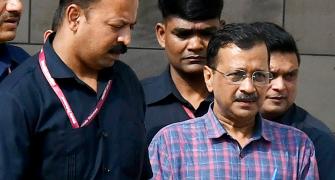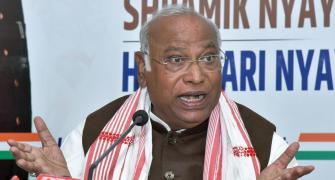Full text of Rahul Dravid's Pataudi Memorial Lecture in New Delhi.

Good evening...
Thank you to the BCCI for asking me to deliver the Mansur Ali Khan Pataudi Memorial Lecture this year, instituted in memory of one of the great leaders of Indian cricket.
It means I follow in the footsteps of some mighty names in Indian cricket – Sunil Gavaskar and my teammates, Anil Kumble and VVS Laxman. Now this is a slightly unconventional batting order; and trust Laxman to speak so eloquently and in such rich detail about Tiger Pataudi in his speech last year, that it becomes impossible to match. Just like when we were batting, I know I can’t beat VVS in style or range when it comes to paying tribute to Indian cricket’s one and only Tiger, and I don't think Sourav will mind if I say so, so I don't think I should try to play any new shots.
But I think it would please Tiger Pataudi though, if this evening becomes an opportunity for us to reflect on issues that affect and matter in Indian cricket. To anticipate what our world today will look like ten years down the line, what we need to do to stay ahead of the game and to think through both our problems and our solutions.
Indian cricket at the moment is in a state of both enormous popularity and considerable reflection. It is blessed with great resources, financial and human, and is currently trying to arrive at a consensus over the best way possible to make the most of what we have. Indian cricket’s economic strength is both the envy of the world and if I may say so, some of its resentment.
We are at a moment in our history where we have every reason to be optimistic, but where we must strive to be visionary leaders of the world game, working with equal parts foresight and empathy.
At times like these, we need the wisdom of our elders and the energy of our young cricketers to do what is best for Indian cricket and the game at large. For a few weeks now, I have thought about what kind of advice would Tiger Pataudi, one of our most wise elders, have offered us.
As a young cricketer I always wanted to meet Mansur Ali Khan Pataudi because growing up I had heard so much about him from senior players. From the biggest names in Karnataka cricket of the time: EAS Prasanna, B S Chandrasekhar, GR Viswanath. They would tell us about this inspirational and charismatic captain. At a time when former cricketers had post-retirement careers as analysts and commentators of the game, Tiger Pataudi was heard about much more than he was seen. He had what you call an aura and I thought maybe that was because he was, after all, a prince; maybe that was what princes were supposed to be like.
When I did meet him, one afternoon at his home in Delhi almost 20 years ago, I was struck by two things: the first was an utter lack of bitterness about what he had been dealt with by destiny: to have the world at your feet as a highly-accomplished 21 year old sportsman and to then lose sight in one eye at the point your career was just about to take off. To then handle that, find a way to continue playing at a level that made a difference not merely to his team, but to his country’s cricket.
The second feature that struck me was the absence of any "in my day" kind of talk. There was no excessive nostalgia in him, he had a great positivity about modern cricket. He was not unnecessarily critical of the modern player, believing that cricket had improved in every aspect. He was incisive, analytical and objective. He took great pride in Indian cricket and how far it had travelled.
Keeping in mind the situation we are in today, I have no doubt about what Tiger Pataudi would have said. Put cricket, first and foremost, at the centre of every decision you take. The bottom line of all our endeavours must always be the sport that we love.
About how to keep it fresh, inclusive, beyond mere frequent rule-changes, how to enrich it beyond the commerce.
In the years since I've retired, I have got a chance to get a different view of Indian cricket – slightly more distant, yet still very attached. I have got a chance to see what Indian cricket is like from a parent's eyes. Over the last couple of years, my son has taken a liking for the game, playing age-group cricket in Bangalore. It has given me an insight as to how the modern Indian game is run at the grassroots and how different it is - or isn’t - from the time I first took to cricket.
Since it's best to start at the beginning, I would like to talk about where it all begins. Our junior game. Taking a step back from living inside the cricket circuit, if you like, I want to convey how important it is to get more youngsters in our cities to take up the game.
Let's look at cricket from a child's eyes. Right at the beginner's level. Age 6 or seven.
In terms of team sport you experience, football, in which you would normally play every time you turn up at practice, are running around and kicking a ball. You get to wear colourful shirts, with different names on their backs. Messi one day, Ronaldo the next.
Then there's cricket: which at the start doesn't even seem natural. You have to stand sideways holding a bat and even when given a ball, you cannot throw it. Throw, you are told, is a very bad word. You about six or seven years old. When getting into sport, it is hardly surprising that you will find football more attractive.
Then, what has not changed in junior cricket in the last three decades since I began is the routine: Wake up at 5:30. Get ready, quick breakfast, travel a good 30 kilometres to the ground. Play the match and get back home by 6 pm if the traffic hasn't been too bad. Here's the toughest part, which is also the same.
At that match, as a young nine or ten year-old cricketer, sometimes you don't even play. Sometimes you get out the first ball and have nothing to do for the rest of the day.
On worse occasions, the umpire gives you a bad decision because you were batting too slow in an improbable chase and just delaying his return home.
Sometimes, you just do nothing the whole day, get shouted by your coach for not giving the star player water, the instant he asked for it. At some point, how could no ten-year-kid, ask himself or herself, if it’s worth all the effort? What is the modern parent's view of this situation? They look at cricket and say that's a lot of time away from home. For which their son or daughter could spend hours waiting for a turn to bat or merely sitting because they have been dismissed early.
What I am trying to say here is that our world, particularly in the big cities, has changed dramatically. It means cricket's own appeal to both children and parents has changed considerably. The generation when you could say that "every Indian baby is born with a cricket bat in the hand" is well behind us.
I feel that strongly because I can see more Indian children in the cities taking up other sports. Cricket is not their first game anymore. A leading sports equipment manufacturer tells me that in the last 4-5 years, the percentage of sales of cricket equipment in the children's category, has gone down when compared to the sales of footballs, table tennis and badminton racquets and swimming gear.
This is great for India's sporting ecosystem; having been involved with a few Olympic and Paralympic athletes, it is very gratifying to see young children attracted to a range of other sport.
The cricketer in me is a little apprehensive about this trend. Not because other sports are getting more popular which is terrific, but because we may not be doing enough to attract children to cricket and from there, we could be losing out some talented youngsters and future fans of the game.
You may ask, has not cricket always been a tough sport to learn and teach? Despite that, has it not remained India's No.1 sport for a long time? So why should we worry now? I agree with much of that. That is the situation on the ground today.

Now.
Has Indian cricket ensured that it will stay the same twenty years down the line? In what is a dynamic sporting environment where our children have more access to other sports. They can watch a Messi, a Federer every day on TV. There are so many football, badminton and tennis academies; table tennis coaches travel to apartment complexes where all you need is a table.
Cricket needs to wake up. But how?
Rather than expect our best talent to come flocking to our junior cricket nurseries, we first need to have a clear, detailed plan. A blueprint for our junior cricket.
Let's go through cricket one step at a time: our children start out, some as young as five, at a private cricket academy, where there is no shortage of man power, and as many coaches as we can find. Drive through Bangalore in the summer and every 5kms you will go past a cricket camp buzzing with activity.
How can that be bad?
To start with, there is a certain fundamental discrepancy at work here.
The age group that gives academies its biggest revenues is the youngest – the beginners, age five upwards. Yet they are paid the least attention. Usually, it is the junior-most coach who works with the hardest to handle youngest kids. Kids that age can't be stuck into the nets and expected to obediently do drills. Five year olds need to be entertained for the entire duration of their training and be taught skills as part of that enjoyment.
The youngest coach, hard-working and committed he may be, is often given 20 children between 5-7 year olds to handle. Never mind twenty, try handling five. If we check, there’s a good chance the coach has not undergone any specialised training in working with children. Nor will there be any official coaching certification about the level of his skills. He could be training kids using methods he learnt from his coach more than a decade ago.
The youngest coach shouldn't be working with the youngest wards; it should in fact be the other way around. In a fascinating book called "The Talent Code", writer Daniel Coyle talks about how greatness across many fields, - be it sport, music, science - is not only 'born' it is grown.
Research has established that the first coaches to many great athletes or musicians, scientists were slightly elderly people, almost like father-figures. The best kind of coaches were those who set a child onto that path by 'coaching love', ensuring that what the child possessed could be nurtured to its fullest. In our case, playing cricket.
With very young children coming into the game, the coach needs to have the patience and expertise to handle children and make sure that their first engagement with the game starts with having a good time. With loving what they do. We must find a way to educate coaches through whatever media works. Our coaches, like our people, are diverse; some may not look at 50-page documents with any affection. It is where Indian cricket should seek to draft and adopt a universally-applied Junior Cricket Policy. It doesn't have to be a mind numbing 50 page document; it can be a well-explained simple framework.
There must be strict guidelines as to what a child does at an academy – what age group plays with what ball, how many yards do they bowl from, how many overs they bowl and what the coach to child ratio must be. I sometimes see nine-year-olds being made to bowl 22 yards which is terrible for them – in terms of the load on their bodies and the short cuts they take to get to the other end.
The BCCI must publish a Minimum Standards guideline which academies must adhere to. If they fail, they must be pulled up. We could get the most out of this vast network of academies if they are brought into the formalised structures of the game. And made responsible and answerable to the governors of the game at our highest level.
That sounds simple enough to execute but how about the finances of these academies? Private academies need to cover their costs – ground rent, equipment, coaches’ salaries and so on. A decent academy that runs from June to January with weekends-only sessions costs parents anything between Rs. 14-15,000 a year. Summer camps are about Rs. 6000, this only for practice, nets. If you want to play matches, you need more to cover ground fees, umpire fees, transportation. Then there is the kit which is pretty expensive.
What happens to those boys who cannot afford it? How do we get them into the system? How do we ensure we have given them a fair chance and are watched at least once by scouts and coaches? There are ways: the state associations could use a portion of their funds to run free camps at government schools for their children. We’re referring to a tiny slice of the Rs 25 to 30 crore that state associations are given every year by the BCCI.
Our junior cricket must increase participation numbers by giving kids a chance to have fun and enjoy the game, boys and girls both. These private academies can serve as the vehicles of this exercise; they are nurseries of our cricket and we are fortunate to have so many. If the five to seven year old is well taken care of in our academies, we are not going to lose their talent.
What happens next? Age 12, the boy or girl has learnt the basics, loves the game and is now playing school and age group cricket. The fun versions of the game as pick-up contests in the neighbourhood or the academies now becomes a little more serious. Their school or club teams play in age-group tournaments and their coaches want their teams to win. In an average school team, there are about 4-5 decent batsmen and they usually bowl as well, there are about three other players who make up the numbers as they are good athletes, selected because they can run fast and stop the ball. At times, they spend a whole tournament without either batting or bowling. I have watched enough U-14 games now to know that this is true. It is very easy for the parent of such a child to say goodbye to cricket. There goes a 12 year old. If there is a younger sibling in the family, chances are that the parent is going to withdraw him or her from cricket as well.
Recently, the KSCA conducted an U-14 league tournament, made up of 50-over games. In one game the score was some 325 for 1, there were 2-3 double hundreds and a few more big hundreds in that tournament. I want to ask AB de Villiers if he scored double hundreds in one-day games at 12-13? Because at that age, I would just about get to a 100 in 50 overs.
At that under-14 match where the score was 325-1, ask yourself what did the eight other players on the batting team do all day? At age group tournaments of this level, there need to be strict guidelines to allow more children to participate, rather than have the more accomplished kids to rack up big centuries. Those are important, yes, but in selection matches or zonal games. In school and club cricket, there should be some rules to even out the game-time available to everyone.
When an eleven is picked, there are four kids on the bench who have taken a day off from school to sit on the sidelines and do nothing. Our junior cricket needs to think of options – rolling substitutions like in football, or a rotational system in batting or bowling, where everyone is given a chance. Just as an example: maybe batsmen could retire after scoring a 50 (or a 30?) and return only after their side has lost 3 more wickets. Bowlers should be allowed to bowl a maximum of 1/3rd of the total overs instead of 1/5th .
We know some of these policies are followed in other cricketing nations, it is time we act too. The longer we take, the more talent is going to be drained away from our cricket.
Let's move on: if the child has survived the U-14 levels which is hard in itself because some states even field under-14s and if a child doesn't make it into the state team, some parents can believe that there is no future in cricket. I must remind anguished parents and children that that it is too early to decide at the age of 14, that a child is not going to be good in the game. As a 12-13 year-old, you are only just beginning to develop physically. Cricket is a game of skill and the more opportunities you get to hone that skill, the better you can be. If you're forced out early, when only just growing, who knows how good you could have become?
Zaheer Khan didn't bowl with a season-ball until he was 17. Javagal Srinath didn't play under-19 cricket for India. They came into their own as they hit 20. Had their parents pulled them out of cricket because they weren't making the cut in junior cricket, that's one thousand one hundred and thirty one (1131) international wickets less for India. Let's not forget their combined total of international runs either – 3915, three thousand nine hundred and fifteen – because fast bowlers get really annoyed if you ignore their valuable contributions with the bat.
Let's get back to our contemporary junior cricketer: 15-year-old, reasonably good but now studying in Std 10. Alarm bells ringing in the heads of Indian parents everywhere. At an age when the only decision that boys should stress about is whether to start shaving or not, we expect them to decide what they want to do with their lives. What usually happens in such a scenario is that one set of players - those who haven’t made the U-16 state team - decide that cricket is not for them.
Then others decide to give up on studies altogether because they are dead sure they can make it in cricket. I think of this as a rather dangerous trend, because it takes place at an age when our young cricketers need counselling. Just like all teams now have anti-corruption briefings, I think every U-16 state cricketer should go through a proper counseling session organised by his state association, with educators who understand the situation that the young cricketer is in. It is important for our young cricketers to continue with their education – even if all the time away from schools makes it hard for them to finish their graduation. It will be something they can go back to in case the cricket dream doesn't come true for some reason. But aside from all that, it is important to stay connected to school and college because it will mean they have friends outside cricket, conversations outside cricket and life experiences that are not connected to cricket. It will give them the perspective needed to become well-rounded adults.
A single-minded focus on cricket is not a bad thing but the adults need to ensure that it cannot be to the exclusion of all else and become dangerously obsessive. It is worse when approved of by his parents. I know children whose parents upload their scores in matches, photos and videos of their batting in the nets from the time they were little. Four or five years old. Sometimes parents give up their jobs and careers to follow and track their kid's progress at every step. Imagine the kind of pressure the child will feel, now that he thinks his family's future is depended on his cricket to an extent? These kids grow up with cricket and only cricket. While they can climb up the ladder, there is every chance, with complete emotional investment in the game, the child may struggle handling the pressure at the top. Our game helps develop our personality but it also tests the character of the young like little else. At times like these, as young cricketers, we can only draw strength from a range of life experiences, from our all-round life experiences.
Now, I can see some of you shifting in your chairs and actually even read your minds. A few of you are going, "Come on Rahul, surely you've heard of that Tendulkar guy?"
Sachin was different. Talent-wise, he was a freak. Everything about his rise to the Indian team, the inevitability of his success was beyond the ordinary. It was phenomenal and to us who were his age, it was almost scary.
What people tend to forget is that Sachin had a great support system. His family were supportive and caring, his elder brother was always there to guide him, his coach Ramakant Achrekar was more than a coach, a mentor – in life and on the pitch, teaching him how to hold the bat, driving him to games. Sachin was lucky that he had this vast umbrella of support and I dare say and he would agree, he wouldn't have survived and prospered if not for it. Not every young talent is lucky enough to have that kind of support. The history of Indian cricket is littered with stories of young exciting talent falling by the way side due to a lack of support and guidance.
There are two lots of adults that help groom young cricketers: the parents and the coaches.
When parents see a little bit of talent, they burst with pride and want to encourage it. Sometimes, we tend to get carried away and cross the line between encouragement and virtually steamrolling a child. Such pressure from home then only aggravates the fear of failure. It often is a case of the parents chasing their own unfulfilled dreams through their children. Then there are the coaches: at the junior level, results, while important, need not be treated like the be-all and end-all. I know associations, schools, clubs and academies have bonuses given to coaches for winning and I'm not sure that's a great idea at the junior level. Today's coaches can take a leaf or two out of the way men like the Keki Tarapores and Ramakant Achrekars took responsibility for the overall growth of their wards along with their cricket.
From turning a young cricketer into a confident sportsman and a responsible adult, the obsession with results can have a diametrically opposite effect. As coach of the India U-19 team, over the last few months I have seen quite a few youngsters and many, many matches. When I hear about some under-19 bowlers being reported for a suspect action, it upsets me deeply. What were the coaches doing until the boy got to that age - 17-18-19? Did his faulty action begin at the age of 10 years old, because his coach had him bowl the full 22 yards? Then as he grew up did his next bunch of coaches just let it go because the boy kept getting wickets and winning tournaments?
So, at 19, when an eager, hard-working boy could have played the junior World Cup, he is left trying to correct his action instead. Did this collection of short-term goals achieved through short-cuts hurt the child because as adults we turned a blind eye?
Like the issue of bowling actions, it is a similar emphasis on short-term results that has led to the scourge of overage players in junior matches. That entire exercise begins when a coach alters a player’s date of birth so that he can take part in a local tournament. The parents are happy to accept the value of an extra year or two, particularly in junior cricket and, academically at middle school. The truth is that the player who has faked his age might make it at the junior level not necessarily because he is better or more talented, but because he is stronger and bigger. We all know how much of a difference a couple of years can make at that age. That incident will have another ripple effect: an honest player deprived of his place by an overage player, is disillusioned. We run the risk of losing him forever.
It is not that nothing has been done to identify the guilty – and I do think of them as guilty. Like, in the KSCA, a child's birth certificate is valid only, if it is dated within two years of the child's birth. The BCCI's bone density test is an excellent introduction, but even if it discovers that a child wanting to play in a under-16 competition doesn’t meet the stipulated criteria, there is nothing done to ensure that the child's birth date is reviewed or corrected so that he doesn't slip through the system and turn up as a 20 year old trying to get into an under-19 tournament after a few years.
How can we work through this loophole? Those Minimum Standards guidelines to academies that I spoke about earlier, perhaps could also state a demand that academies need to collect birth certificates of every aspiring young cricketer and have it recorded into the larger state association data base of registered players.
I think of this overage business as dangerous and even toxic and to me gives rise to a question: If a child sees his parents and coaches cheating and creating a fake birth certificate, will he not be encouraged to become a cheat? He is being taught to lie by his own elders.
At 14 it may be in the matter of the age criteria, at 25 it may be fixing and corruption. How are the two different in any way? In both cases, is it not blatant cheating?
What do we play sport for? Not merely exercise – then we could run forever or get onto a cross trainer or an exercise bike. We play sport for the all-round lessons it teaches us, for its ability to improve not merely our physical skills but to expand our minds as well. To learn life skills – about discipline, honesty, ethics, fair play, teamwork. Age-fudging and illegal bowling actions are mere short cuts to gain personal advantage for a brief period of time, rather than what sport is about - personal improvement over a career and from there, over a lifetime.
How will a sport survive if its finest values – of honest effort, persistence, a respect for the rules, the acceptance of defeat - itself become redundant? How will a sport survive if everyone is cheating at every stage?
I have seen some good initiatives put into place – like the BCCI's My Debut Match, which encourages parents to bring children to games. It was a pity that only one day's play was possible in Bangalore when the KSCA had decided to bring in 5000 school kids to the Test. I read that Justice Mudgal who is in charge of the organisation of the Delhi Test, wanted free tickets to be distributed to children whose parents couldn’t afford to bring them to the game. This is forward thinking. It is these children in our cities who could grow up in the next decade or two to become India’s future leaders – in the corporate world, policy-makers, heads of industry.
I strongly believe that these young kids are the first generation of Indians who could be growing up without a deep personal connection to the game. Because they have other options. My generation, the post 1983-genreration, grew up with cricket and cinema as our only forms of leisure. Cricket was talked about, watched on television at home, or played at an amateur level at picnics, we went to matches with fathers and uncles and cousins.
Today's children have many, many other options. They will grow up to be the thought leaders and opinion makers and fund-managers. It is why Indian cricket must reintroduce its children to the game and its magic all over again. They are a very, very serious audience.
I would like to end this very long talk – maybe it's actually been more of a lecture than a speech - with a memory of Tiger Pataudi I hold very dear and always will.
After we won the Test series in England in 2007, and claimed the Pataudi Trophy, all of us were posing for photographs at the Oval with him.
It's at that time that he said to me, "I'm really proud of what you and your team have done, how you did it and what you have achieved." It meant a lot to me to hear those words from someone of his stature in our game. It had been 21 years since India last won a series in England and it had been a huge victory for all of us in the team, for Indian cricket and for its fans.
I have spoken at such length about junior cricket because I believe in it passionately – that we need to invest as much energy, time and focus into India's youngest cricketers as we do for those at the elite level. Because we know that they will always be the source of Indian cricket’s happiness, success and achievement.
Let us do all we can to make Tiger Pataudi prouder still.
Thank you…








